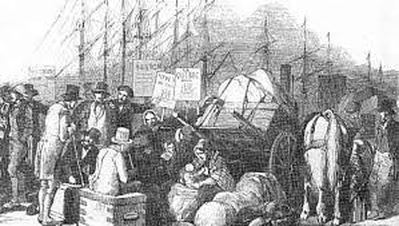A megacity is defined as a metropolitan area with a total population in excess of 10 million people, and they are becoming the focal point to measure the impact of climate change and mass urbanization. The result is a growing population of vulnerable inhabitants whose only choice is migration out of the region to cities and/or countries where they hope they can at least feed their families. Many times, like the European migrations currently because of civil strife in home countries, receiving cities and countries are unprepared and strained to provide adequately for refugees resulting in inadequate housing, food, and health services.
Humanitarianism in itself is not enough if a country is ill-prepared. Environmental migration is very similar with some of the same pitfalls including skepticism and even resentful local populations who view the immigrants as “foreigners” who want to take their jobs and deplete resources. Even environmentally displaced persons within a country create distinctive stressors among disparate religious and cultural populations. Dhaka, India is a victim of its own modernization complicated by rising sea levels creating a flood plain displacing millions of farmers in the surrounding area who were previously self-sufficient. It’s subsistent living that has served generations until now. Farmers were forced to migrate into the city of Dhaka creating an influx of migrants straining the resources and geography of the city creating an underclass of migrants. Before mass urbanization, Dhaka was a city of canals and the city could “breathe” in and out the annual flood water that would naturally flow out away from the city. Growth and land fill, however, increased the land masses as the canals were filled in and building construction replaced the natural waterways that prevented flooding of the city and countryside. In addition bordering India, Bangladesh is estimated to lose 11 per cent of land by 2050 from flooding, soil degradation, rising sea levels and desertification affecting 15 million people who have nowhere to go except India and Dhaka has already become a receiving city for environmental refugees from the country side. India will be the natural choice for many climate migrants because it has already absorbed millions of Bangladeshi migrants — both legal and illegal — since Bangladesh first came into being in 1971. The 2001 Indian census indicates that of the five million documented migrants living in India at the time, around three million were Bangladeshi. At present, migration from Bangladesh is the combined result of social, economic, political and environmental factors. Migration patterns will soon become unmanageable if existing practices for handling these migrants continue. Environmental migration is becoming a salient consequence of climate change and unabated greenhouse gas (GHG) emissions and poor climate risk adaptation. The scientific consensus is that warming of the climate system is “unequivocal.” With an increase in global temperatures and climatic variability, there is a higher risk of an increase in migration inducing events, such as droughts, desertification, flooding, soil erosion, and transmission of airborne diseases, and other societal and ecological incidents. Megacities are becoming focal points to study climate change, mass urbanization and the effects of growing vulnerability to environmental and social change as a product of environmental migration. The intersection of climate change and mass urbanization in Megacities hinders timely climate change adaptation impacting the cities directly, as well as the ability to embrace environmental and/or social refugees and displaced persons. Europe is feeling the pressure now as fear grows that borders will be sealed to prevent migrants escaping civil strife from entering countries where resources are becoming scarce as well as intolerance by regional citizens. Sealing European borders, however, would have to be initiated en masse to prevent the funnel effect of refugees into only a few countries. Environmental migration in the future will dwarf the civil strife migration patterns Europe is experiencing now. Estimates are conservative that 200 million people could be migrating by 2050 due to environmental conditions. Some scientists believe the Earth will experience a series of “tipping points” that will be irreversible that require significant unpredictable human migration. “Worst-case-scenarios” are for the most part inevitable if current economic, social and political stagnation patterns continue with climate change deniers inhibiting progress toward energy sustainability. Migration will no longer be a choice, rather a necessary survival option for individuals in an increasing number of vulnerable regions. Will the 200 million migrants by 2050 be the poor and disenfranchised, while corporate CEOs and the 1 percent escape? Resources “Hot Cities” television documentary focusing on at risk cities due to climate change and other factors, one of which is Dhaka, India. Dust bowl migration The Irish famine
0 Comments
Leave a Reply. |
Dava Castillo
is retired and lives in Clearlake, California. She has three grown
children and one grandson and a Bachelor’s degree in Health Services
Administration from St. Mary’s College in Moraga California. On the
home front Dava enjoys time with her family, reading, gardening, cooking
and sewing. Archives
November 2015
|


